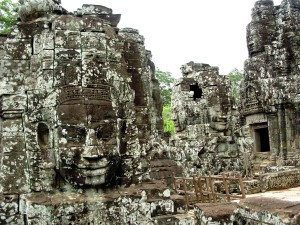 Bayon Temple is one of the supreme wonders of Cambodia. This Khmer temple was built for the Buddhist King Jayavarman VII during the transition from the 12th to the 13th century – one of the last temples built at Angkor during a period of religious unsettledness.
Bayon Temple is one of the supreme wonders of Cambodia. This Khmer temple was built for the Buddhist King Jayavarman VII during the transition from the 12th to the 13th century – one of the last temples built at Angkor during a period of religious unsettledness.
Subsequent rulers shifted religious paradigms back and forth between Buddhism and Hinduism and operated structural modifications and additions on the original complex. As a result, Bayon is endowed with singular and impressive displays of architecture. Today, it’s regarded as one of the best displays of the baroque Khmer architecture, and is one of the major highlights at the Angkor archaeological park: a UNESCO World Heritage Site.
Bayon Temple Architecture
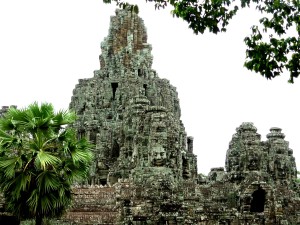 One of the distinctive features of this Buddhist temple are the dozens of friendly faces carved in its enormous stone towers. Around 200 gigantic smiling faces, each facing a cardinal point, give a warm welcome to the visitors of the sanctuary. Curiously, all the faces are different, yet, distinctively similar to each other and to the statues of the king. This has ignited many debates about whether or not these faces represent someone in particular, and if so, whom exactly. Some scholars have concluded that the faces represent king Jayavarman VII himself while others believe that they are representations of Lokesvara, the bodhisattva which encompasses compassion in Buddhism. Another theory proposes that they intertwine depictions of Buddha and the king. To this day, no one has been able to solve the mystery.
One of the distinctive features of this Buddhist temple are the dozens of friendly faces carved in its enormous stone towers. Around 200 gigantic smiling faces, each facing a cardinal point, give a warm welcome to the visitors of the sanctuary. Curiously, all the faces are different, yet, distinctively similar to each other and to the statues of the king. This has ignited many debates about whether or not these faces represent someone in particular, and if so, whom exactly. Some scholars have concluded that the faces represent king Jayavarman VII himself while others believe that they are representations of Lokesvara, the bodhisattva which encompasses compassion in Buddhism. Another theory proposes that they intertwine depictions of Buddha and the king. To this day, no one has been able to solve the mystery.
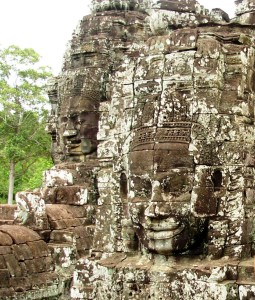 Another notorious hallmark of the Bayon shrine are its impressive bas-reliefs. A rich plateau of motifs and themes decorates the exterior walls of the temple: sculptures of battle scenes are mixed with activities in the royal palace and even with problems of the average person. Indeed, when the Khmer empire was at its peak, it was no longer a scandal to depict subjects side by side with their kings and spiritual leaders in this type of architectural ornamentation. At Bayon in particular, one can see soldiers commanded by Jayavarman VII, princesses preparing for a leisurely walk, nobles fully engaged in chess games and hanging around with men drinking liquor in the market while watching dogs or roosters fighting each other and women carrying goods on their heads or even giving birth to a child.
Another notorious hallmark of the Bayon shrine are its impressive bas-reliefs. A rich plateau of motifs and themes decorates the exterior walls of the temple: sculptures of battle scenes are mixed with activities in the royal palace and even with problems of the average person. Indeed, when the Khmer empire was at its peak, it was no longer a scandal to depict subjects side by side with their kings and spiritual leaders in this type of architectural ornamentation. At Bayon in particular, one can see soldiers commanded by Jayavarman VII, princesses preparing for a leisurely walk, nobles fully engaged in chess games and hanging around with men drinking liquor in the market while watching dogs or roosters fighting each other and women carrying goods on their heads or even giving birth to a child.
To reach Ba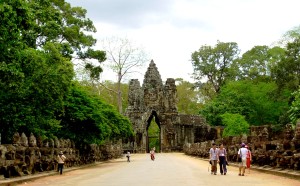 yon Temple, visitors must enter through one of the four entrances of Angkor Thom. These feature 23-meter towers, each with a carved face in the same style of those in Bayon. Giving access to the entrances are bridges guarded by rows of giant deistic statues. It’s an awe-inspiring reception.
yon Temple, visitors must enter through one of the four entrances of Angkor Thom. These feature 23-meter towers, each with a carved face in the same style of those in Bayon. Giving access to the entrances are bridges guarded by rows of giant deistic statues. It’s an awe-inspiring reception.
Other places of interest around Bayon Temple Cambodia
Bayon is right at the center of Angkor Thom, the last capital city of the Khmer empire: 9 km² of beautiful green forests and ancient ruins surrounded by imposing 7-meter tall walls. The ruins of this ancient city rank among the best tourism hotspots in Southeast Asia. In Angkor Thom visitors can also find the majestic, and recently restored, Baphuon temple mountain, showcasing the Baphuon architectural style, or the ruins of Phimeanakas temple. Besides these a visit to the Khmer master pieces Angkor Wat temple is a must. If time permits, visit to floating villages around Siem Reap is highly recommended. Ta Prohm is another popular temple in the region!
Best time to visit Bayon Temple
One of the best ways to experience these sites is to watch the sunset or the sunrise during the hottest dry season: from March till May. The striking contrast between the beautiful sky colors and ruins surrounded by forest, and with the sun on the background drawing shadows on Bayon’s faces, is an unforgettably picturesque scene.


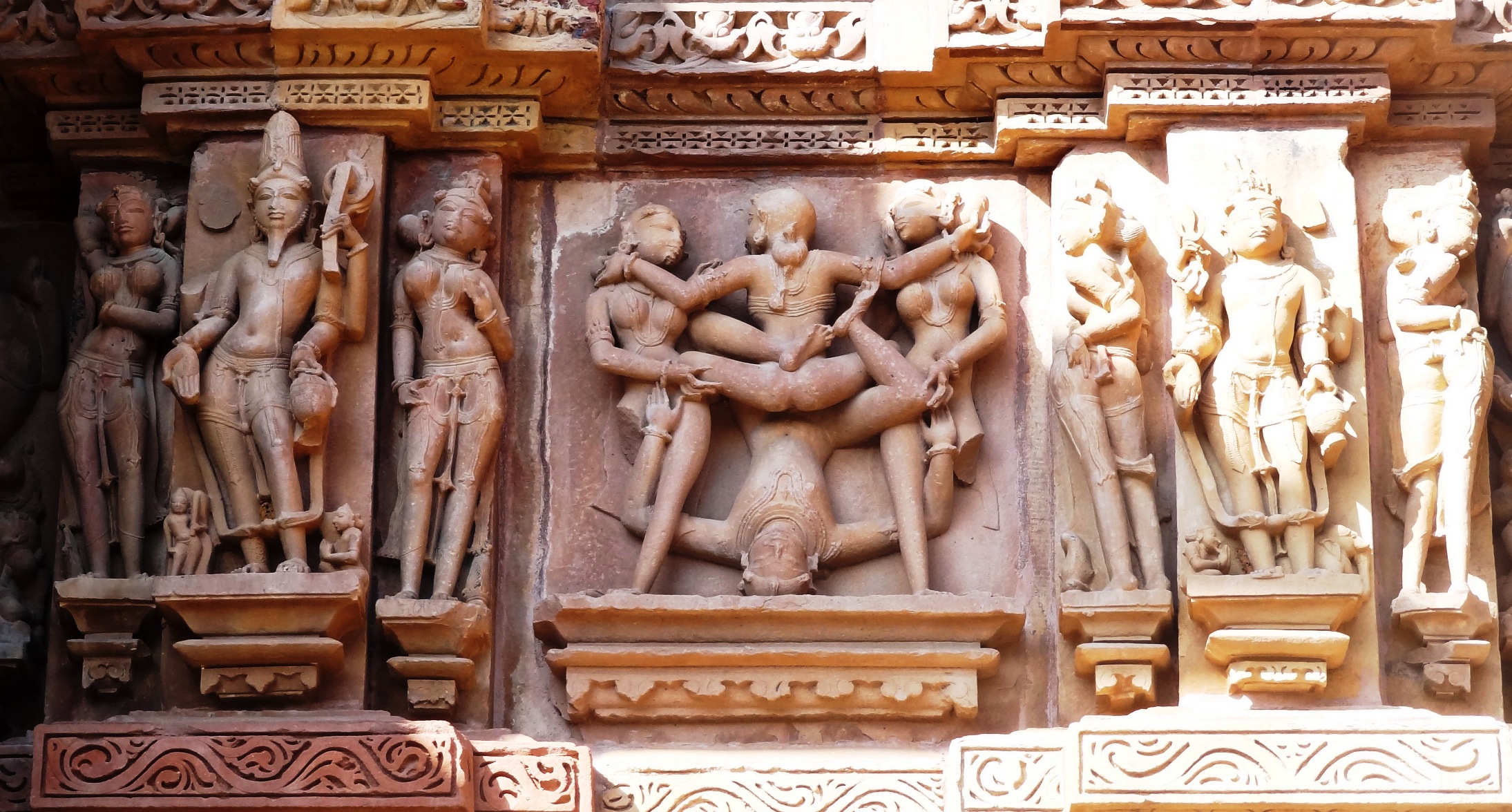
Pingback: Angkor Wat Temple- Khmer Masterpiece! | I love tripping! Travel Blog